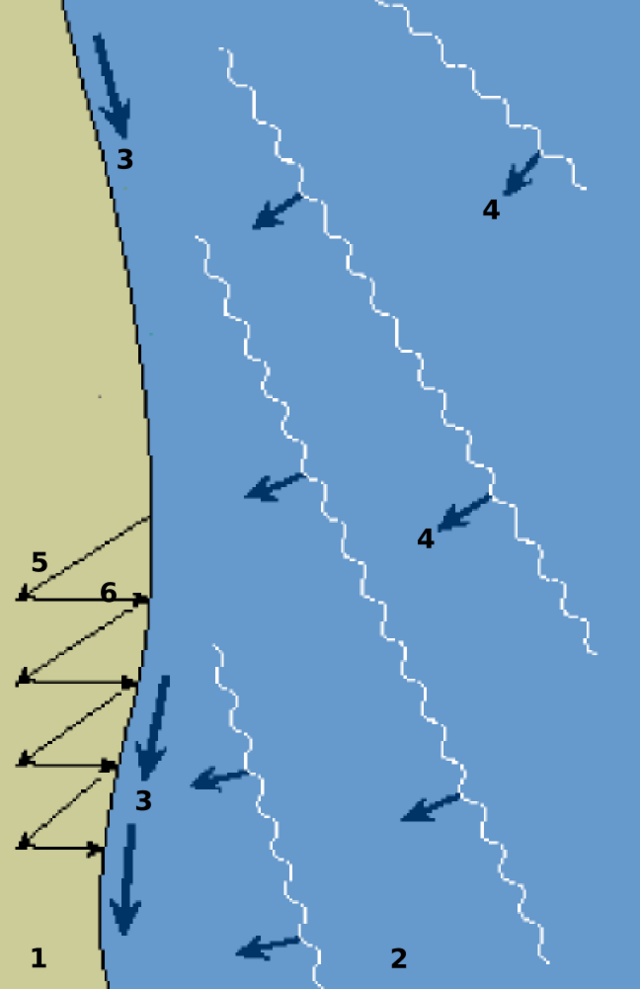geological process by which sediments move along a beach shore From Wikipedia, the free encyclopedia
Longshore drift is the process of the ocean currents forcing sand and other material down a beach.


The material is first pulled into the currents by the backwash (the water going out to sea) and is then pushed back up the beach by the swash (the water going onto the beach). Longshore drift always moves in the direction of the main wind. If longshore drift continues for a long time, beaches can be changed quite a bit. The changes depend on the details, and vary from place to place. Longshore drift is the net (average) movement of sand grains across a beach in a zig-zag motion.
There are many inexpensive and effective ways of controlling longshore drift. The most common method is groynes (wooden walls that the sand builds up against). Some people dislike groynes because they interfere with walking along the beach, and the look of the beach.
Seamless Wikipedia browsing. On steroids.
Every time you click a link to Wikipedia, Wiktionary or Wikiquote in your browser's search results, it will show the modern Wikiwand interface.
Wikiwand extension is a five stars, simple, with minimum permission required to keep your browsing private, safe and transparent.